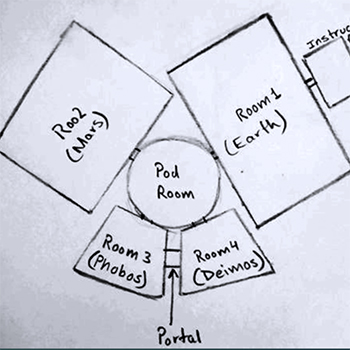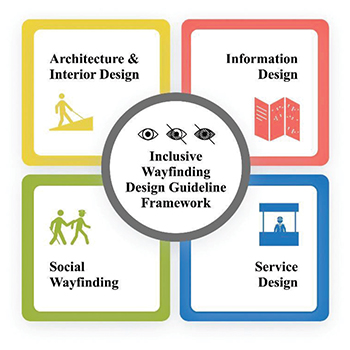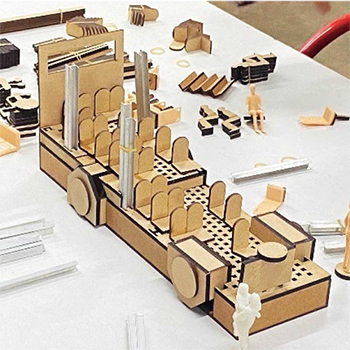Thesis
Batch 2024
(5 items)
ThesisBatch 2024
(5 items)
(5 items)
Events and Intents: Understanding Fun in Mechanic-driven Tabletop Games
by Malay Nitinkumar Dhamelia; supervisor/s: Prof. Girish Dalvi
by Malay Nitinkumar Dhamelia; supervisor/s: Prof. Girish Dalvi
Board games are meaning-making institutions. Certainly, they can be things—objects or artefacts for passing time, entertainment, learning, or socializing. However, a thing cannot survive millennia without being meaningful to the people, their countless generations, and their culture. Board games are institutions because they have norms and behaviours set around them. There are cultures in and around gaming with procedures, norms, and rituals identified over years to support the meaning-making in games. Mokshapattam, the 13th-century predecessor of the modern Snakes and Ladders, Chutes and Ladders, and other variants, served as a conduit for moral instructions, play, and performances. Contemporary board gaming encounters can also be seen as having gaming etiquettes that facilitate collective and individual meaning-making. Board gaming is an institution because it caters to fundamental social, cultural, and human needs—the search for meaning in acts, environments, and events. Perhaps it is the novel meaning that games afford, or perhaps it is the novel mode of meaning-making in games that has allowed them to survive for so long. The quest to understand the meaning and the meaning-making in games has puzzled thinkers from across time and disciplines. On the surface, games have been used to make sense of life. "Life is like a game" is a commonly suffixed sentence used by thinkers and philosophers. The "like a game" kind of thoughts indicate that games were used as a scaffold, a muse, perhaps an inspiration to understand other aspects of a thinker’s interest. The pre-Socratic philosopher Heraclitus used games to understand the abstract concept of time using games: "Time is a game played beautifully by children." Wittgenstein used the family resemblance of games to understand language. Using games as a metaphor for other concepts perhaps indicates the meaning-making potential in playing games.
Details >>Design Interventions in Farm Equipment for Indian Small Farmers
by Pai Sanket Satish; supervisor/s: Prof. Sugandh Malhotra, Prof. Selby Coxon & Prof. Robbie Napper
by Pai Sanket Satish; supervisor/s: Prof. Sugandh Malhotra, Prof. Selby Coxon & Prof. Robbie Napper
The Indian agriculture sector is an essential part of the country's economy and employs a significant portion of its population. Farmers with landholdings of less than one hectare and between one and two hectares are classified by the Indian government as marginal and small-scale. Due to the fragmentation of landholdings and land division among children with each new generation, the number of small farms and farmers is steadily increasing. This land size reduction can impact the farmers' yield and ability to afford farm inputs, making small farm cultivation a challenging process. Despite a thrust towards farm mechanisation, most small farmers still rely primarily on traditional tools and methods. Though farm implements reduce drudgery and enhance efficiency, small farmers struggle to balance investment in expensive farm equipment and crop yield. A gap exists between simple, cheap hand tools and costly, large-scale powered tools like tractors. The research has led to the generation of a design framework that allows for designing context-specific, human-centred interventions in farm equipment for small and marginal Indian farmers. The design framework has been verified during the steps of the project-based iterative design approach. This has led to the design of a low-cost, portable, human-powered rice thresher that considers the locally available materials as well as skill sets of fabrication and repair while allowing ease of learning and operating. The framework developed to design these types of interventions would help other researchers, designers, and engineers to work more effectively in the farming domain. In the long run, the research aims to improve small farmers' livelihoods while improving food security.
Details >>The Active and the Interactive: Discourse in Interactive visual Narratives
by Krishna Kumar Radhakrishnan; supervisor/s: Prof. Ravi Poovaiah
by Krishna Kumar Radhakrishnan; supervisor/s: Prof. Ravi Poovaiah
An Interactive Visual Narrative (henceforth IVN) is a form of visual storytelling where the mode of narration is interactive in nature. In this form, the audience’s role changes to that of a participant, collaborator, and co-creator of the narrative. The focus of the study is from the vantage point of a designer into the dynamics of discourse production in IVNs. It tries to address their prime concerns, the level and nature of interactivity to be provided to the participants to facilitate the production of an engaging narrative. Scholars have conducted research in distinct genres with various agendas. The scholars have not adequately borrowed methodologies from each other. Hence, the methods of investigation for these studies and the outcomes are disparate. In this thesis, we relook at the mechanics of discourse production in IVN by situating IVN as a universally existent phenomenon. The enhanced approach to the study is at a structural level, focusing on discourse production in IVNs. The proposal examines the ‘order of presentation’ and the ‘order of telling.’ There is a change in focus from ‘a content–presentation-oriented approach to a content–presentation–telling approach,’ which we designate as a deficit in previous research and theories relating to IVNs. Formulating the elements that make the structure, their function, and the IVN model will facilitate the encapsulation of the obscure mechanism of discourse production in IVNs. We devised an IVN Analysis Tool to systematically capture the elements and illuminate their function in the overall IVN structure. The composition of the narrative units was designated to facilitate the understanding of discourse production, the mapping of elements that provided interactivity, and its implication on the discourse.
Details >>Inclusive Approach Towards Understanding Wayfinding by People with Vision Impairments in Mumbai Suburban Railway
by Shikha Agarwal; supervisor/s: Prof. Prasad Bokil
by Shikha Agarwal; supervisor/s: Prof. Prasad Bokil
This thesis deals with the wayfinding needs of people with vision impairments (PVIs) in Mumbai Suburban Railways, also called the Mumbai Local Train Commuting System (MLTCS). This suburban rail commuting system serves 7.4 million commuters daily in India's financial hub and boasts the world's highest passenger density among urban railway systems (Gardas et al., 2013). Despite being the most crowded public environment, rail commuting in India is still the most dependable and economical mode of commuting both intercity and within the city. They are the oldest, fastest, most affordable, and irreplaceable means of daily commuting, supporting the livelihoods of millions of commuters, including people with impairments. In the economically developing world, people with impairments suffer a high incidence of poverty, perpetuated by a lack of access to socioeconomic opportunities. Mumbai's suburban rail commuting system plays a vital role in alleviating poverty if it supports the mobility needs of people with impairments through an empathetic and inclusive wayfinding system design approach. Unfortunately, to date, attempts made in the direction of development focus on most travellers who are non-disabled, thus ignoring those with special needs such as mobility, sensory, and cognitive impairments (Raheja & Tyagi, 2016).
Details >>Gender Mainstreaming in Urban Mobility Plans: Participatory Prototyping for Requirement Capture
by Dhriti Dhaundiyal; supervisor/s: Prof. Nishant Sharma
by Dhriti Dhaundiyal; supervisor/s: Prof. Nishant Sharma
Public transportation is pivotal for achieving social and environmental sustainability in rapidly expanding urban areas. Yet, transportation systems frequently overlook the needs of diverse demographic groups due to skewed or incomplete user data, perpetuating issues of transit captivity. This research underscores the importance of incorporating gender perspectives into urban mobility planning. It scrutinizes the Comprehensive Mobility Plan of a Tier II city in India and the implementation of a new bus service, shedding light on the biases inherent in modelling transportation solutions in the consultant-driven processes of technocratic urbanism. By adopting participatory prototyping methods and qualitative data analysis as methods of inquiry, a generative participatory design toolkit was developed. The toolkit is designed to capture the tacit needs of underrepresented demographics, such as women, in the design and delivery of public transportation services, thereby mainstreaming gender in urban mobility plans. The generative prototyping toolkit was developed through iterative development with four pilot workshops, involving 19 design professionals, students, and community members from across the country. Eight participatory workshops were then held with 32 carefully selected representative participants from the same Tier II city, gathering qualitative insights into their commuting needs. The data from these workshops were analyzed using rigorous qualitative data analysis and mapped onto design features in the workshop-created prototypes. Based on the design morphology observed in the prototypes, two bus models were developed and validated by a larger group of community members in an evaluation workshop with 42 women to confirm the findings from the participatory workshops. Finally, a framework for integrating citizen voices into urban mobility plans, through participatory prototyping, is proposed, offering a pathway to more inclusive public transportation.
Details >>



